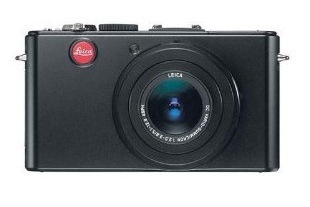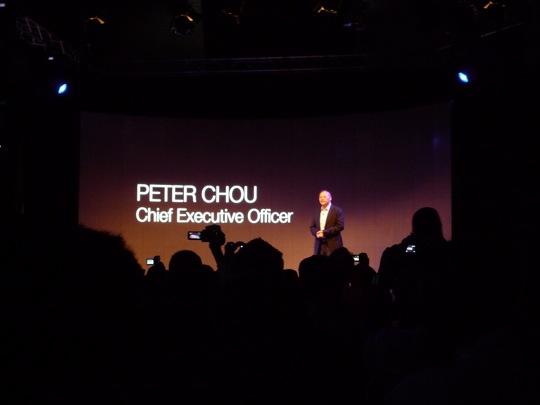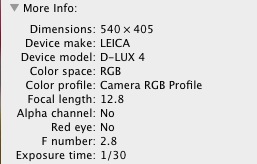
Leica has a stranglehold on the the hearts and minds of photographers everywhere. Even if the professionals call it a “dentist’s camera,” as in a camera that is popular with folks with too much money and not many photography chops, there’s something about that little red dot that is as iconic as the black and white of a Speedmaster or the clean lines of a Ferrari GTO. It’s something that survived the ravages of time relatively unscathed – perhaps worn down by evolution and advancement but still, at least to the part of the brain that desires comfort in the permanence of the material, the same.
So we come to the Leica D-LUX 4, the latest lovechild of Leica and Panasonic. The D-LUX 4 is, at its core, a Panasonic LX3K and but the price disparity is so slim that you’ll barely notice it. The D-LUX, like the LX3, has a 10-megapixel sensor, 3-inch screen, and a 10x optical zoom. The minimum focal length is 5.1 mm and the max is 12.8 (about a 24-60mm equivalent on a 35mm frame). It has a tiny pop-up flash and ISO sensitivity from 80 to 3200. It weighs 8 ounces.
I won’t go into the D-LUX v LX3 fight here but suffice it to say there is very little difference, on the aggregate, between the two. This site shows excellent side by side comparisons, for example, and there is little clear difference in the pictures.
On the whole this is a heavy-duty camera built for discerning point-and-shooters. At $699 it’s $100 more than its Panasonic-made twin and comes with little more than a battery and charger, AV cable, and USB cable. It takes SD and SDHC cards.
Shooting is great fun with the D-LUX 4. The pictures come out crisp and clear, even in low light. Take this shot, for example:

 This was shot in Aperture Priority mode at the settings you see here. I have been hard-pressed to grab a shot like that, especially from about 20 meters from the subject in a dark room, with my Canon Rebel let alone a typical point and shoot. For me, that’s worth the price of admission right there.
This was shot in Aperture Priority mode at the settings you see here. I have been hard-pressed to grab a shot like that, especially from about 20 meters from the subject in a dark room, with my Canon Rebel let alone a typical point and shoot. For me, that’s worth the price of admission right there.
The UI is quite clean and the buttons are all well-placed and easily accessible. The Mode wheel is a little light – it will slip out of your set mode if you jostle it too much in a bag – but once you start shooting everything is painless. I was also amazed at the quality of the LCD. Usually the LCDs on point and shoots are a “sketch” of the image taken. This LCD was absolutely true to the actual scene and was a great gauge of a shot’s value.
The camera has all of the obligatory scene modes although setting it in Aperture or Shutter will give you great shots 99% of the time. Don’t be afraid to leave the flash off as well.
One pet peeve – there is no automatic lens cap so you have to take the little dangly lens cap off before shooting. If you don’t attach it you will lose it and it does fall off in your bag.
Bottom Line
The cynical anti-marketer in me wants to say “Just buy a LX3” but not having used one actively I can’t make that claim. They are, on the whole, almost exactly the same except for price.
I was quite impressed with this camera and if Leica and Panasonic want to swap everything down to the button placement on the back more power too them. The D-LUX 4 is a gateway drug and anyone who has used an M8 will attest that when you use Leica glass on a Leica body you get some amazing shots. That said, the D-LUX 4 is an excellent second point-and-shoot and is great for grabbing hard to frame shots that other point-and-shoots would completely destroy. Sure you’re going to be a little ostentatious wandering around with your sexy red dot but who doesn’t want to be noticed sometimes?
Sample Shots
[PSGallery=89j5igvctr]
Here is some further D-LUX 4 discussion: